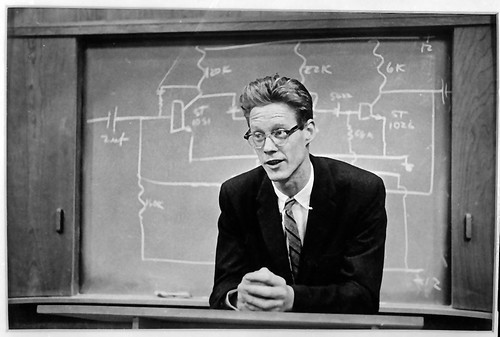Why Many Experts Make Bad Presenters, Especially For Novice Audiences
When I was a new teenage driver, I learned not to ask my father for directions. (Remember we did not have Google Maps yet.)
Our discussion would go something like this:
Jeff: Dad, what exit do I take off of the freeway to get to Valley View Mall?
Dad: You get on Peters Creek Road and head north for a few miles until you see Mill Mountain Highway. Take that exit and go east for a couple of miles until you see Valley View Mall on your left hand side. Take that exit. Then turn right onto Valley View Mall Lane. If you go too far, you’ll miss the exit and have to make a U-turn. If you end up at Shoney’s, take the right, then a left, then another right and you should be in the back of the mall parking lot.
Jeff: (head swimming) Where’s Mill Mountain Highway?
Dad: It’s the freeway you take to go downtown.
Jeff: But that’s I-581.
Dad: Yes, that’s Mill Mountain Highway. Ok, here’s another way you could go. Forget what I just told you and take the following route instead…
Jeff: Ar-g-g-g-g-h. (Walking away in frustration.)
The Expert’s World Is Different Than The Novice’s
As you can see in the above exchange, the expert direction giver (my dad) views his world differently from the way the novice direction taker (me) sees it. I clearly was asking the Subject Matter Expert (SME). Yet I was not learning from the SME’s directions.
No one is at fault here. Both my dad and I wanted a successful outcome. Both of us were fully motivated to find a solution. Both of us were fully engaged in the learning process.
We assume that if SMEs know so much, they should have no challenges helping others learn. And yet it doesn’t normally happen because experts and novices do not process information in the same way. In fact, the greater the expertise, the less the expert thinks like a novice learner.
So what’s the result of most SMEs presenting to audiences? Just like in my scenario, learning breakdown.
We’ve all experienced one of these frustrating SME-Novice exchanges from asking for a recipe, to asking a coworker how to access information, to asking how to login to a Webinar, to listening to a conference presenter.
Many of us have a fundamental belief that the best way to learn something is to ask an expert. Yet research continually demonstrates how differently experts and novices view the world. More specifically, how something should be learned.
Unlocking The SME-Novice Learning Mystery
Can you ride a bicycle? If you can, can you explain to me how you maintain your balance on that bicycle?
Most people answer yes to both questions. When people proceed to explain how they keep their body and bike from falling, the responses change dramatically. Why? The majority of what we have learned on how to balance a bike was through trial and error over time. We simply grew our ability to do it.
Our expertise in riding a bicycle is in the form of procedural knowledge. We’ve built up our knowledge and experience on how to do it.
When we ask SMEs to present, we are asking them to use declarative knowledge. They are expected to transmit knowledge by explaining, giving examples, providing context and discussing case studies.
The learners then have to convert that declarative knowledge from the training back into procedural knowledge to meet the expectation of being able to do things in a new way. It’s much easier said (declarative) than done (procedural)!
Education research shows that what we learn declaratively is not easily transformed into procedural knowledge unless we already possess similar procedural knowledge. The reverse is also true. Procedural knowledge does not easily translate into declarative knowledge.
This conversion challenge illustrates why my father and I had problems in the learning process. And it illustrates why SMEs have challenges presenting to novices.
Adjusting Presentations To Align With The Type Of Knowledge Given
If the goal of a presentation is “talk-about” knowledge (the what, why, facts, recall or names) we can provide activities that our learners discuss declaratively. If the goal is for them to acquire and use the knowledge, then the strategy must provide a more hands-on approach. This can be more difficult in conference settings where they can’t immediately apply the information. The work around is to have them visualize the situation and then identify where to apply the new steps of the process and predict outcomes.
Ultimately, asking SMEs to teach novices how to do something is setting both groups up for failure. The best approach is to match what the participants have to learn with the mode of instruction (declarative/procedural). Offering a presentation that includes a combination of both, explanation and practice, is the winning formula for success.
What are some ways we can use SMEs at conferences and events? Why do we place such an emphasis on learning from experts?


